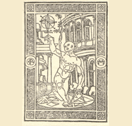

The majority part of the arguments of this site are dealing with the many years archaeo-antiquarian research by the architect Piero Meogrossi who has discovered and documented assiomatically the original topography of Rome according it to the city-state design planned at the mythic Romulus's age also credited by the archaeologist Andrea Carandini's studies. A topographical pattern is the main supporter which gives an absolute measure to the Roma Quadrata testifying the ancient rules herited to be shown by that invisible urban axis subordered and functional to the Roman society laws. That topographical system has organized the space-time of Rome for several centuries and now it could be able to transform that archaic "geographical message into a modern neo-ancient culture", a sort of collective memory able to re-use the Roman art and architecture history so to convince the institutions to increase an educational act to let the citizen culture matured and to get all together the new development for a conscient identity towards the Bene Comune Roma (Welfare Community).
The topographycal synopia of Rome, a welfare community culture for a nea-polis
The archaelogical documents dealing with Rome have been touched by "an antiquity manner for knowledge" so to put in evidence the peculiar "abductive logic" : The ars memoriae which comes through is able to reveal an unexpected ancient topographical net system by which the commun visitors of the city as the specialists of the Roman hystory can reconsider the urban forms. New credits structured by the historical models give new values and pragmatic meanings to the symbolical hystory tells abled to prepare a sort of cultural revolution hidden in the acts correlated to the antiquarian and artistic research by Warburg . Those iconographical forms link physical past ages able to put in order again so to be visited and connected by the art propositions dealing with the monuments of Rome whose criticism permits to testify differently the archaelogical data. After the last hundred years subordered to a positivist material culture we have to move again through the Warburghian's art paths so to push the modernity forward an antiquarian Rome lecture accorded to that XVth century double proposition dealing about Polis and Polia, city and wisdom together so to inlight the modern urban society and interpretate better the ancient world rules.
Such propositions, an apparent literary vision, show the Imago Urbis master plan for the third millennium which can enrich the archaeological researchers and the modern Polifilo (an architect whose projects can modify the historical tells) who's being alternative to the academic Polifilo and able to start up a "love battle for a Dreaming of Rome", a sort of cultural enterprise supported by the business plan promoted by a Roman mixed foundation. The scattered urban identities must push the new civic actions to a seeking for cultural and economical synergies: citizen and contractors together become part of a E-Polis marked by a neo-ancient message able to increase knowledge and preserving the heritage so to get advantages and a sustenable development, desired propositions and common needs similar to those activities represented by an integrated action of private-public practiced in the city of Rome when aged by the pope Sisto V urban plan and later represented by the Nolli's map.